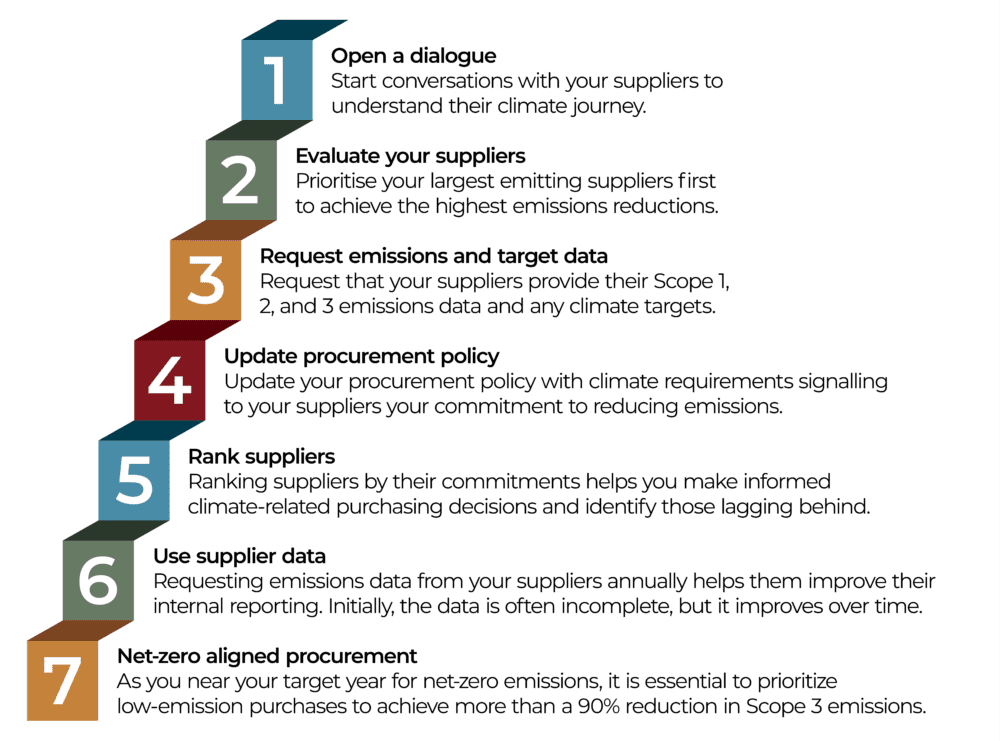
Leveraging your supply chain for net-zero emissions
For the world to keep warming below 1.5 °C in line with the Paris Climate Agreement, climate science says that we need to drastically reduce emissions to below 10% of current levels by 2050.
For the world to keep warming below 1.5 °C in line with the Paris Climate Agreement, climate science says that we need to drastically reduce emissions to below 10% of current levels by 2050.
As a business, the first step on this journey is measuring your Scope 1, 2 and 3 emissions. Scope 1 and 2 emissions are operational emissions that arise from the use of energy and fuels. On the other hand, Scope 3 emissions arise from a business’s value chain, including but not limited to suppliers, logistics providers, waste remediators, employees, and customers emissions. While Scope 3 emissions are frequently cited as being out of a business’ control, this is not strictly true. The key lies in engaging with this diverse range of stakeholders.
Focusing on the supplier side of this task, since emissions from purchased goods and services often make up a significant proportion of Scope 3 emissions, supplier engagement should take the following steps:

| 1.) Open a dialogue | Start Conversations with your suppliers to understand their climate journey |
| 2) Evaluate your suppliers |
Prioritise your largest emitting suppliers first to achieve the highest emissions reductions. |
| 3) Request emissions and target data |
Request that your suppliers provide their Scope 1, 2, and 3 emissions data and any climate targets. |
| 4) Update procurement policy |
Update your procurement policy with climate requirements signalling to your suppliers your commitment to reducing emissions. |
| 5) Rank suppliers | Ranking suppliers by their commitments helps you make informed climate-related purchasing decisions and identify those lagging behind. |
| 6) Use supplier data | Requesting emissions data from your suppliers annually helps them improve their internal reporting. Initially, the data is often incomplete, but it improves over time. |
| 7) Net-zero aligned procurement |
As you near your target year for net-zero emissions, it is essential to prioritize low-emission purchases to achieve more than a 90% reduction in Scope 3 emissions. |
Following these steps will help you act on your climate targets and allow you to prepare for pressure from your customers, ensuring your business thrives in the transition to a low-carbon economy.
At Inspired, we provide the skills and support necessary to measure your all Scope emissions.
Scope 3 emissions inventory is recommended to help stakeholders understand a company’s full value chain and prioritise steps to reduce their greenhouse gas emissions. Click here to find out more.
For more information on the evolving reporting landscape and Inspired’s approach to making effective ESG disclosures, click here.










